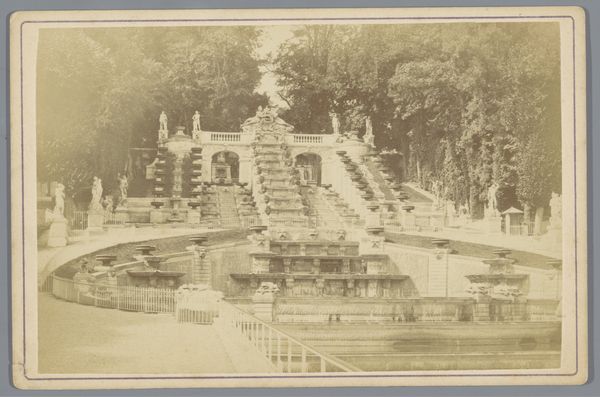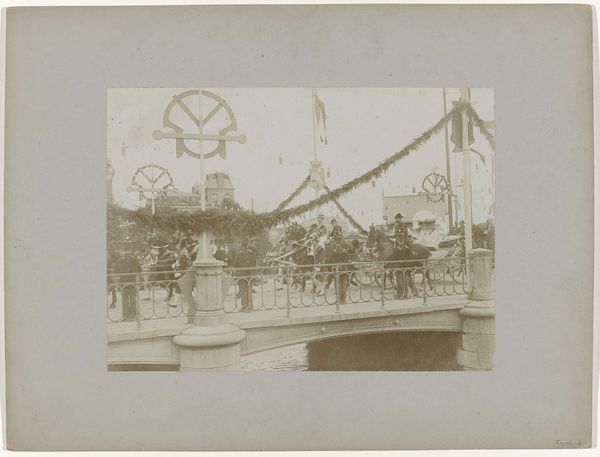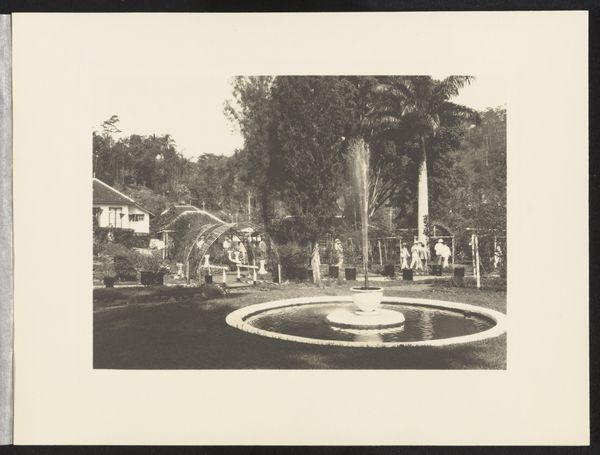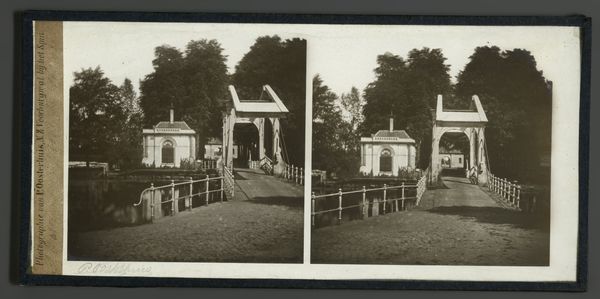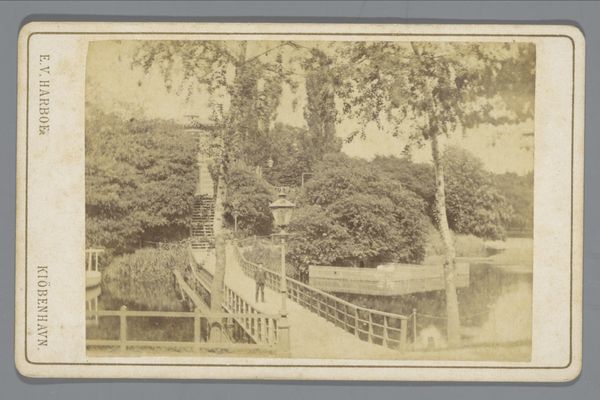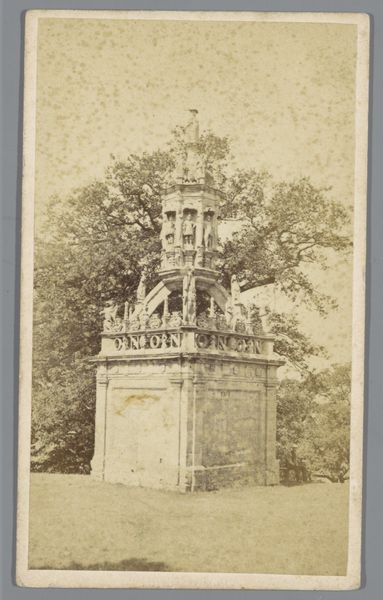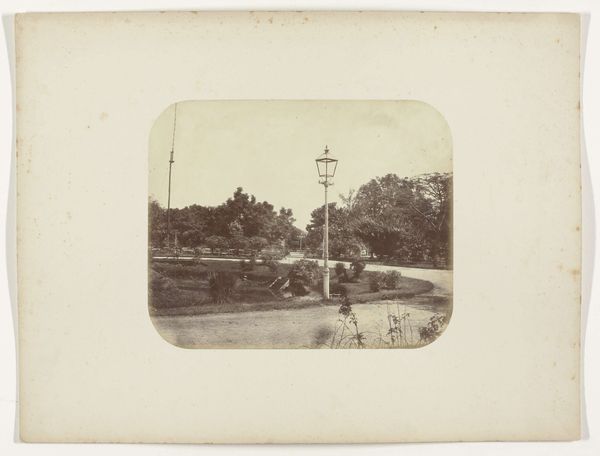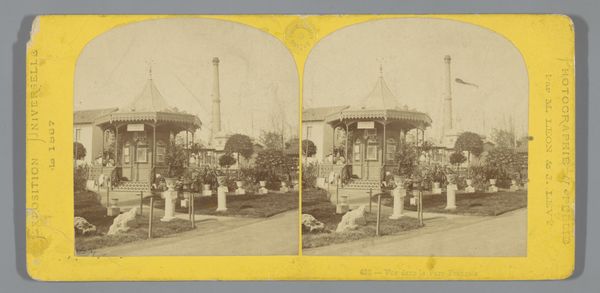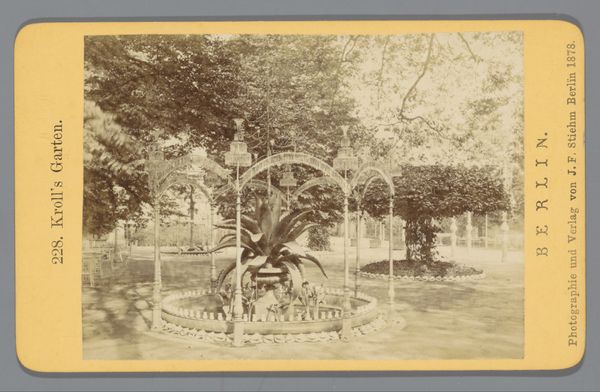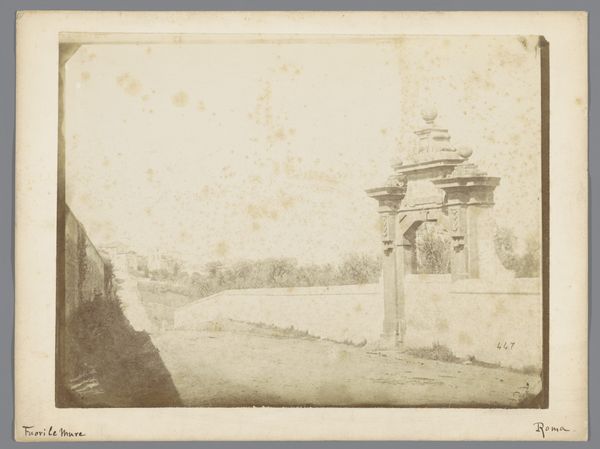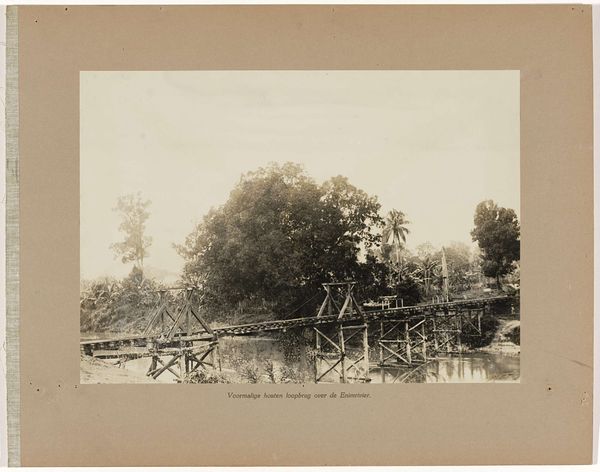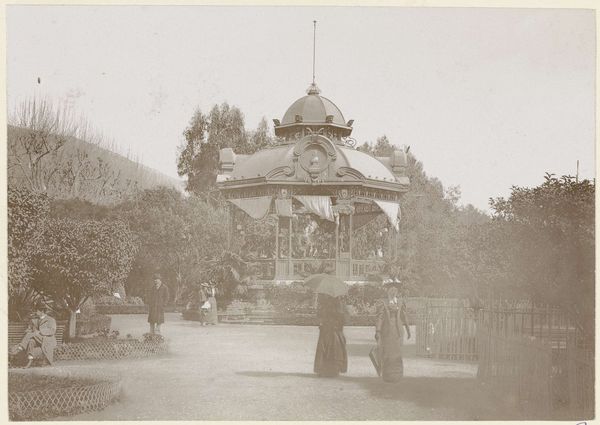
Dimensions: height 254 mm, width 356 mm
Copyright: Rijks Museum: Open Domain
Curator: This gelatin silver print, dating from between 1873 and 1890, offers a glimpse of the water clock in the Villa Borghese gardens in Rome. The image captures a carefully orchestrated scene within a romantic landscape. Editor: It strikes me immediately with a feeling of orchestrated nostalgia. The way the light dapples across the artificial rockwork creates an almost dreamlike impression. There’s a clear attention to detail in capturing texture—the stone, the trees, and that imposing clock tower. Curator: Precisely. The clock itself speaks to the rise of public works in the 19th century, where timekeeping became a shared experience facilitated by civic structures. Its placement in the Villa Borghese also highlights the park’s role as a social space for leisure and recreation. Editor: And what materials went into building this public object. The photo helps visualize the social processes behind something like the public clock and water feature—whose labor moved the stone? Where did the clock materials come from and who produced them? Curator: That's key to understanding this period, actually, as the construction of these parks and follies was often interwoven with the growing visibility of the industrial workers shaping these spaces. It reflects a moment where nature was reinterpreted through the lens of burgeoning industry and public consumption. Editor: I see that consumption embodied in how artifice creates 'nature'. Even the clock itself acts like a material witness to a society concerned with framing nature and controlling temporality within it. There’s something poignant about the artificial rocks trying to appear organic around the very structured, mechanical clock. Curator: It encapsulates how technology and nature became intertwined themes in late 19th-century art. This print gives us both the physical documentation of this interplay and the narrative crafted for public consumption. It offers an idealised picture of urban life. Editor: The contrasts and the contradictions make it a valuable piece for thinking about landscape, technology, and public experience today. Curator: Indeed, a study of progress at odds with an increasingly artificial version of the natural world.
Comments
No comments
Be the first to comment and join the conversation on the ultimate creative platform.
